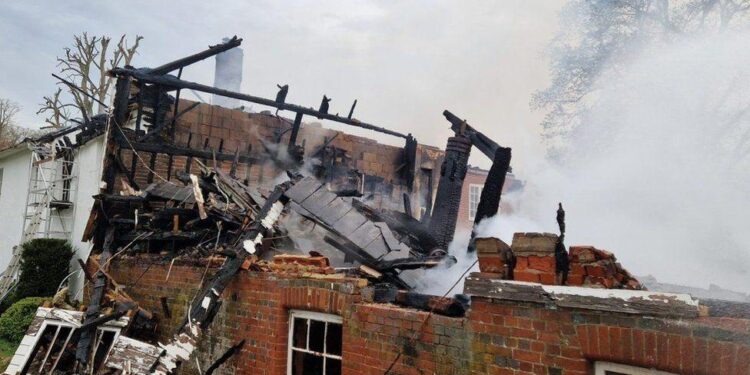After a disaster, whether it’s a flood, fire, or storm, the aftermath can feel overwhelming. From assessing the damage to navigating the insurance claims process, the path to recovery may seem daunting. Fortunately, restoration companies play a critical role in not only repairing the damage but also guiding homeowners through the insurance process.
This blog will break down the steps that follow a disaster, explain how restoration companies collaborate with insurers, and help you choose the right partner for your recovery.
Immediate Steps After a Disaster
Document the Damage Immediately
The first step after ensuring safety is to document any property damage thoroughly. Use your phone or camera to take detailed photos and videos of the affected areas, including close-ups of damaged belongings, structural damage, and any watermarks or soot. This visual evidence will help when filing your insurance claim.
Contact Your Insurance Provider
Reach out to your insurance company as soon as possible. Inform them about what happened and provide an overview of the damage you’ve recorded. Many insurance companies have time-sensitive requirements for filing a claim, so acting quickly is critical.
Safeguard Your Property
Prevent further damage where possible. For instance, you might tarp over a roof leak or board up broken windows. Most policies include clauses requiring homeowners to mitigate preventable damage, and failure to do so can sometimes affect your claim.
Working with a Restoration Company
Restoration companies are skilled professionals who step in during your time of need to minimize damage and restore your property to its pre-loss condition. Here’s what their collaboration with you typically looks like:
Initial Assessment of Damage
Once contacted, the restoration company will visit your home to perform a detailed assessment of the damage. This includes examining every impacted area, photographing damages, and evaluating whether items can be restored or need replacement. Their report will align closely with what your insurance company requires.
Swift Damage Mitigation
To prevent further property damage, the restoration team acts quickly. For example, they may extract standing water from your home, remove mold-prone materials, or secure compromised structures. This initial response phase is the bridge between the disaster and the reconstruction.
Some companies specialize in specific disaster restoration services, such as water damage restoration or fire and smoke cleanup, so it’s worth considering companies tailored to your situation.
The Insurance Claim Process
Navigating insurance claims can be one of the most complicated aspects of disaster recovery. Restoration companies often support you through these stages to make the process less stressful.
Filing the Insurance Claim
Once you notify your insurance provider, restoration companies can often assist in preparing and submitting the necessary documentation for your claim. This includes proof of damage, estimates for repair, and an inventory of damaged items.
Adjuster Visit and Scope of Work
Insurance adjusters are sent by the insurance company to assess the damage and verify your claim. Restoration professionals often meet the adjuster on-site to ensure complete alignment regarding the scope of work required to restore your property. This collaborative effort helps establish realistic repair costs and timelines.
Approval and Authorization
Once the restoration company and the insurance adjuster agree on the damage cost, your insurance will provide authorization to proceed. Some restoration companies may wait for this approval before starting any major repairs to ensure you’re not personally liable for costs.
Restoration Work and Insurance Payments
Once the insurance claim is approved, restoration work begins. Here’s an overview of how this phase ties into your insurance claim.
Completing Repairs
Restoration companies handle everything from structural repairs to replacing flooring and drywall. They work efficiently to return your home to its pre-disaster condition.
Addressing Supplements
During the repair process, previously hidden damage may surface (e.g., mold behind drywall or water damage to subfloors). When this happens, the restoration company will file a supplemental request with your insurance provider for additional covered repairs.
Managing Insurance Payments
Insurance payouts typically occur in stages. Many restoration companies work directly with the insurer to ensure payments are managed correctly, streamlining the process for homeowners like you. The final payment is usually disbursed once work is complete and signed off by both you and the restoration company.
Choosing the Right Restoration Company
Your recovery process relies heavily on selecting a skilled and reliable restoration company. Here’s what to look for when deciding who to trust with your home or property repair.
Experience and Expertise
Choose a restoration company with extensive experience in handling your type of disaster. A company familiar with fire damage restoration, for instance, will be better equipped to handle soot remediation and odor removal than a general contractor.
Reputation and Reviews
Look for companies with an excellent track record. Read client reviews and ask for references to ensure you’re choosing a reputable partner.
Insurance Expertise
The ideal restoration company knows the ins and outs of insurance claims. Companies with strong insurance partnerships can significantly ease the process by negotiating directly with adjusters and expediting claim approvals.
Restoring Your Home and Peace of Mind
The destruction caused by a disaster can be both emotionally and financially exhausting. Restoration companies that specialize in disaster restoration services serve as a lifeline—not only repairing your property but also making the insurance process smoother and stress-free.
By documenting damages, contacting your insurance, and partnering with an experienced restoration team, you can make the recovery process as seamless as possible. Don’t forget to vet companies for reputation, expertise, and their ability to communicate effectively with insurers.
The right restoration company doesn’t just restore homes; they help families start anew.






